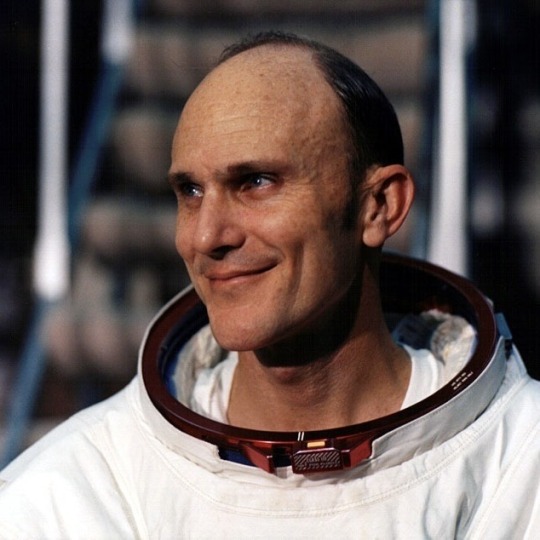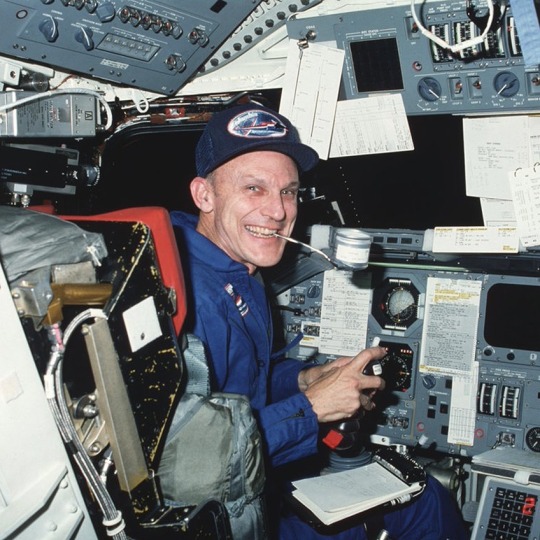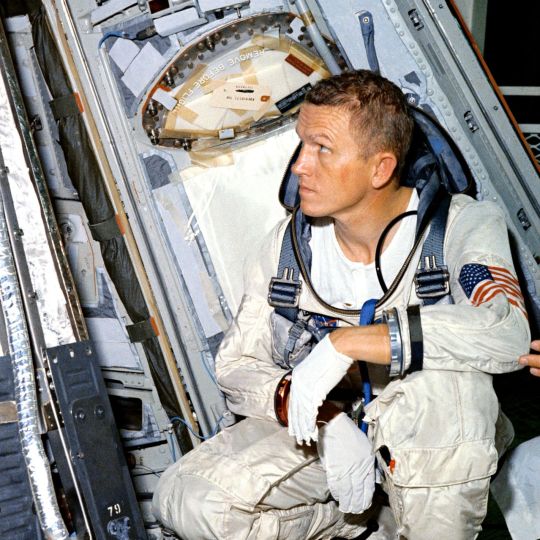#Jack Swigert
Explore tagged Tumblr posts
Text
APOLLO 13: SURVIVAL
Archive play by play
How trip to the moon went wrong
Saving astronauts
youtube
#apollo 13#survival#random richards#poem#haiku#poetry#haiku poem#poets on tumblr#haiku poetry#haiku form#poetic#neil armstrong#Jules bergman#James Burke#walter cronkite#Fred haise#lyndon b. johnson#lyndon baines johnson#peter middleton#jim lovell#netflix#glynn lunney#richard nixon#thomas paine#Jack swigert#Youtube
0 notes
Text
Alright bc I keep putting this off, here’s my actual list of favorite astronauts:
Jim Lovell (I ALWAYS forget him. I feel bad)
Roger Chaffee
Ed White
Chris Ferguson
Matt Dominick
Sandra Magnus
Gus Grissom
Fred Haise (my dad went to his birthplace!!!)
Jack Swigert
Ken Ham
Bill Gregory (he’s from my home town!)
(Side note: I’m pacing in my kitchen eating ice cream while writing this post.)
1 note
·
View note
Text




Kevin Bacon as Jack Swigert in Apollo 13 (1995)
[x]
1 note
·
View note
Photo

This was like 7 months later.

April 1972… Apollo 13 astronaut John Jack Swigert signing autographs During a meeting of NASA personnel, Apollo 13 Command Module Pilot John Jack Swigert signed autographs. Note the Apollo 16 Manned Flight Awareness crew photo in lower right. In April 1973, Swigert took a leave of absence from NASA to work for the Committee of Science & Astronautucs and resigned from NASA in August 1977 to enter politics for the Republican Party. Note Swigert wore his personal Gold Rolex GMT-master 1675 pilot watch, a favorite among many pilots, civil and military alike! (Photo: NASA)
10 notes
·
View notes
Text




Remember NASA astronaut Thomas Kenneth Mattingly II (March 17, 1936 – October 31, 2023), who died earlier this week at the age of 87.
Ken, often known as TK, was the command module pilot aboard Apollo 16 in 1972 and flew aboard the space shuttle twice on STS-4 and STS-51-C. He’s also known for being scheduled to fly on Apollo 13, but exposure to rubella (which he ultimately did not contract) famously led to his replacement by Jack Swigert.
From NASA Administrator Bill Nelson:
TK’s contributions have allowed for advancements in our learning beyond that of space. He described his experience in orbit by saying, “I had this very palpable fear that if I saw too much, I couldn’t remember. It was just so impressive.” He viewed the universe’s vastness as an unending forum of possibilities. As a leader in exploratory missions, TK will be remembered for braving the unknown for the sake of our country’s future.
149 notes
·
View notes
Photo

The Apollo 13 crew, April 10, 1970. Fred Haise (left), Jack Swigert, and Jim Lovell pose on the day before launch. Swigert had just replaced Ken Mattingly as the Command Module Pilot after Mattingly was exposed to German Measles.
171 notes
·
View notes
Note
Who is your favorite non Jack Swigert astronaut?
not to be too on-brand but it's gotta be jim lovell. phenomenal guy
15 notes
·
View notes
Text
ваауу.. только послушайте это люди. ну это же просто прекрасно, я считаю. кстати, я всегда так думаю про тофу, поэтому могу есть её только предварительно в марина��е, тогда она немножко напоминает chicken. классный голос вообще, прям как я и думал👍) а стихотворение , я послушал его два часа назад, но мне понадобилось время , чтобы ответить, потому что нужно было тщательно переварить всё это, так как меня ошарашило . с тех пор я уже послушал три раза. оно правда совершенно замечательное, мне очень понравилось. спасибо тебе большое. @tor-m ты супер! 🖤
P. S. для тех кто не в курсе , всё это напрямую связано с космосом . когда у американцев на космическом корабле возникла нештатная ситуация, там прозвучала такая фраза: «Houston, we have a problem” , was spoken during the Apollo 13 mission in 1970 by astronaut Jack Swigert. The exact phrase spoken was “Okay, Houston…we’ve had a problem here».
21 notes
·
View notes
Text
Those who have travelled to the moon:
Neil Armstrong
Edwin Aldrin Jr.
Michael Collins
Pete Conrad
Dick Gordon
Alan Bean
Jim Lovell
John Swigert
Fred Haise
Alan Shepherd
Stuart Roosa
Edgar Mitchell
Dave Scott
Al Worden
Jim Irwin
John Young
Ken Mattingly
Charlie Duke
Gene Cernan
Ron Evans
Jack Schmitt
Soon, there will be more names on this list: Reid Wiseman, Victor Glover, Christina Hammock Koch, Jeremy Hansen
#apollo program#apollo xi#apollo xii#apollo xiii#apollo xiv#apollo xv#apollo xvi#apollo xvii#artemis program#moon landing day#july 20 1969#moon landing#we're going back#artemis ii
51 notes
·
View notes
Text

Excellent interview of the Apollo 13 crew on the @officialjohnnycarson show, June 3, 1970. Jack Swigert, Fred Haise & Jim Lovell stopped by to speak with Johnny & Ed McMahon just a little over a month following their harrowing ordeal & incredible rescue. Humble heroes through it all. Filmed when the show was still at 30 Rockefeller Plaza in New York City🗽. The interview streams below on YouTube.
youtube
#apollo 13#astronauts#nasa#johnny carson#space travel#astronaut#1970#space exploration#space race#space#vintage space#space age#moon landing#space flight#1970s#vintage television#apollo program#space program#spaceman#space history#project apollo#spacemen#vintage tv#tonight show#historic#heroes#Youtube
55 notes
·
View notes
Text
I never mentioned this but he died before he took office.

In honor of Biden dropping out of the race, here’s Jack Swigert watching the 1982 congressional election which he fucking won. Only republican I like.
1 note
·
View note
Text

“Touring the Michoud Assembly Facility Friday, 20 new astronauts have a look at a Saturn V first stage booster under construction. The group also inspected the Saturn V S-IC. Five scientist-astronauts are included in the group. The 20-man team was selected by NASA last year.”
The astronauts are from Group 5 "Original Nineteen" and Group 4 "The Scientists", they are (L-R): Stu Roosa, Al Worden, Bill Pogue, Charlie Duke, Jerry Carr, Joe Engle, Vance Brand, Jack Swigert, Jim Irwin, Joe Kerwin, Paul Weitz and Ken Mattingly.
Date: May 28, 1966
Mike Acs's Collection: link
#Saturn V#S-IC#construction#Rocket#Michoud Assembly Facility#New Orleans#Louisiana#astronauts#NASA#may#1966#my post
39 notes
·
View notes
Text

On Christmas Eve 1968, as commander of Apollo 8 – the first manned lunar orbital mission – Frank Borman, who has died aged 95, came out with words that, alongside Neil Armstrong’s “giant leap for mankind”, from Apollo 11 in 1969, and Jack Swigert and Jim Lovell’s “OK, Houston, we’ve had a problem”, from Apollo 13 in 1970, defined an era.
In that moment before the moon programme became mundane, when astronauts were prime time, Apollo 8’s broadcast ended with the crew – Bill Anders, Lovell and Borman – reading the story of Earth’s creation as written in the book of Genesis.
It was Borman’s conclusion, “Good night, good luck, a merry Christmas and God bless all of you, all of you on the good Earth”, that clinched it. For Gene Kranz, Nasa’s chief of flight control operations in Houston, the phrase was “literally magic. It made you prickly. You could feel the hair on your arms rising, and the emotion was just unbelievable.”
Thus, for some, the traumatic 1968 of the ongoing Vietnam war, the assassinations of Martin Luther King and Robert Kennedy, and the crushing of Czechoslovakia, had been transcended. From a distance – around 238,855 miles – it was still, apparently, the good Earth.
Around two years earlier, Nasa had been in crisis. On 27 January 1967, Gus Grissom, Ed White and Roger Chaffee had been incinerated on Apollo 1 during a test launch. Borman was appointed to the Nasa board which, that April, reported on the fire, slamming Nasa management and North American Aviation for its “ignorance, sloth and carelessness”.
Borman was then sent to North American’s plant in Downey, California – where drunkenness had been rife – to scrutinise command module redesign. “Borman set them straight,” wrote the second man on the moon, Buzz Aldrin, in Men from Earth (1989). “His shoot-from-the-hip management style – some called it bullying – worked.”
The Mercury programme had put astronauts in space. Gemini – to which Borman had been recruited in 1962 – had honed the business of Apollo: to fulfil President John F Kennedy’s goal of a manned moon landing by the end of the decade. In December 1965, Borman and Lovell had made their space debut with a record 14 days of orbit on Gemini 7, and also made a rendezvous with Gemini 6.
In the wake of the 1967 tragedy there were three unmanned Apollo launches, with mixed results. But in September 1968 the unmanned Soviet Zond 5’s orbit of the moon triggered alarm in the US. The Soviets had launched Sputnik, and the space age, in 1957. The first man in space, Yuri Gagarin, had orbited Earth in April 1961. That, along with the furore around the Bay of Pigs fiasco, had helped propel JFK into making his rash pledge in May 1961.
Seven years on, in autumn 1968, Nasa and the CIA were asking whether history was going to repeat itself. Would a Russian be first around the moon? That October, the Apollo 7 astronauts, Wally Schirra, Walter Cunningham and Donn Eisele, spent a successful, albeit cold-ridden and fractious, 10 days in orbit around the Earth. There were rows with ground control. None of those three would get another mission.
Nasa needed a breakthrough. Rather than the next planned Earth orbit, Apollo 8 was to be sent to the moon and, after the astronaut Jim McDivitt turned down the offer, Borman got the job. On 21 December, following a morale-boosting visit from the aviator Charles Lindbergh, Borman, Lovell and Anders blasted off.
Borman’s greatest fear, wrote Andrew Chaikin in A Man on the Moon (1994), was that the moon mission would be aborted and Apollo 8 would be confined to orbiting the Earth. It did not happen, but en route Borman was afflicted by vomiting and diarrhoea, the detrital consequences of which floated on, to be trapped by paper towels. The three men orbited the moon 10 times in 20 hours, descended to 69 miles above the rock’s surface, and were the first to witness the far side of what Borman called “a great expanse of nothing”.
It was on the fourth orbit that Borman spotted the Earth rising from behind the moon – an image that Anders captured on colour film and became known as Earthrise. “Oh my God! Look at the picture over there. Here’s the Earth coming up,” Borman is recorded shouting in a transcript.
Born in Gary, Indiana, Frank was the son of Edwin Borman, who ran an Oldsmobile dealership, and Marjorie (nee Pearce). The family moved to Tucson, Arizona, where his mother opened a boarding house, and Frank went to the local high school. He first flew as a teenager, in 1943. Seven years later he graduated from West Point Military Academy in New York state.
From 1950 Borman flew F-84 fighter-bombers with the US Air Force. A perforated ear drum denied him Korean war combat experience. In 1957 he gained a master’s in aeronautical engineering from the California Institute of Technology and became an assistant professor of thermodynamics and fluid mechanics at West Point.
Three years later he graduated from the Aerospace Research Pilot School at Edwards air force base in California. There, his aircraft included the controversial Mach 2 Lockheed F-104 Starfighter. It was in 1962 that, alongside Armstrong, Lovell and others, he became one of Nasa’s Gemini programme “New Nine”. Apollo 8 proved what had been evident to insiders for many years: that the US had won the space race. Borman, Anders and Lovell became Time magazine’s 1968 men of the year.
Having achieved the rank of colonel in the mid-1960s, Borman retired from the USAF and space flight and, after a sojourn at Harvard Business School, joined Eastern Air Lines. By 1975 he was Eastern’s CEO and a year later became chairman. But by the late 70s competition was intensifying, labour relations were deteriorating and Borman – never a diplomat – was in the firing line. He quit the company in 1986 when it was taken over by a corporate raider, and Eastern collapsed five years later.
He and his wife, Susan (nee Bugbee), whom he had married in 1950, moved to New Mexico, where he remained involved in business interests. They later settled in Billings, Montana, where he had a cattle ranch and rebuilt vintage aircraft. A supporter of Richard Nixon and both George Bushes, Borman was a man of brisk views. Among the many targets of his ire were the sound barrier-breaking pilot Chuck Yeager, the Democratic party presidential candidate Michael Dukakis and the scientist Carl Sagan.
He received many honours, including the Congressional Space Medal of Honor in 1978, and published his autobiography, Countdown, in 1988.
Susan died in 2021. His sons, Frederick and Edwin, four grandchildren and six great-grandchildren survive him.
🔔 Frank Frederick Borman II, astronaut, born 14 March 1928; died 7 November 2023
Daily inspiration. Discover more photos at Just for Books…?
12 notes
·
View notes
Text

1970... Houston, We've had a problem here ! April 13, 1970: Apollo 13 CMP Jack Swigert to CapCom Jack Lousma, as an explosion rocked Command Module "Odyssey". Apollo 13 film mag 59/R photo AS13-059-8488 ... shows the NASA-issued Omega Speedmaster chronograph on Apollo 13 commander James Lovell’s wrist. Probably the best photo of an Omega Speedmaster chronograph taken during an Apollo mission... Apollo 13 " Ex Luna Scientia " (Photo: NASA)
#Apollo#Astronaut#321#chronograph#Omega#Speedmaster#Moonwatch#MoonwatchUniverse#NASA#montres#military#USAF#US Navy#pilot watch#Speedytuesday#spaceflight#Zulu time
10 notes
·
View notes

